Christophe Botella
BIOSP, ZENITH
Applying the maximum entropy principle to multi-species neural networks improves species distribution models
Dec 26, 2024



Abstract:The rapid expansion of citizen science initiatives has led to a significant growth of biodiversity databases, and particularly presence-only (PO) observations. PO data are invaluable for understanding species distributions and their dynamics, but their use in Species Distribution Models (SDM) is curtailed by sampling biases and the lack of information on absences. Poisson point processes are widely used for SDMs, with Maxent being one of the most popular methods. Maxent maximises the entropy of a probability distribution across sites as a function of predefined transformations of environmental variables, called features. In contrast, neural networks and deep learning have emerged as a promising technique for automatic feature extraction from complex input variables. In this paper, we propose DeepMaxent, which harnesses neural networks to automatically learn shared features among species, using the maximum entropy principle. To do so, it employs a normalised Poisson loss where for each species, presence probabilities across sites are modelled by a neural network. We evaluate DeepMaxent on a benchmark dataset known for its spatial sampling biases, using PO data for calibration and presence-absence (PA) data for validation across six regions with different biological groups and environmental covariates. Our results indicate that DeepMaxent improves model performance over Maxent and other state-of-the-art SDMs across regions and taxonomic groups. The method performs particularly well in regions of uneven sampling, demonstrating substantial potential to improve species distribution modelling. The method opens the possibility to learn more robust environmental features predicting jointly many species and scales to arbitrary large numbers of sites without an increased memory demand.
GeoPlant: Spatial Plant Species Prediction Dataset
Aug 25, 2024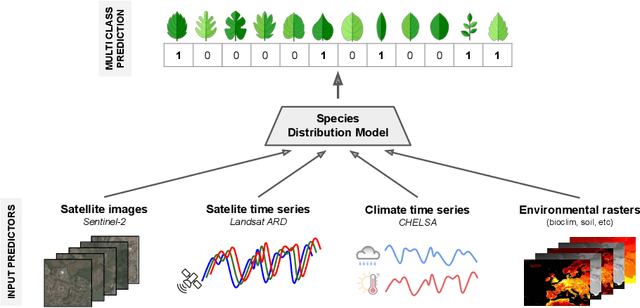
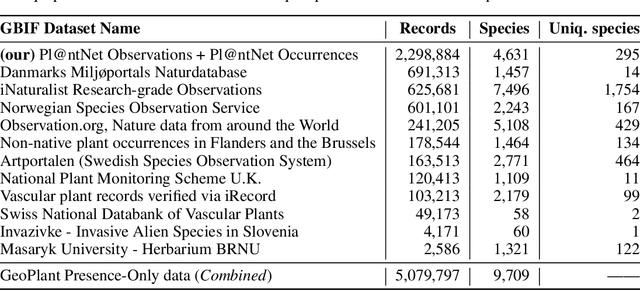
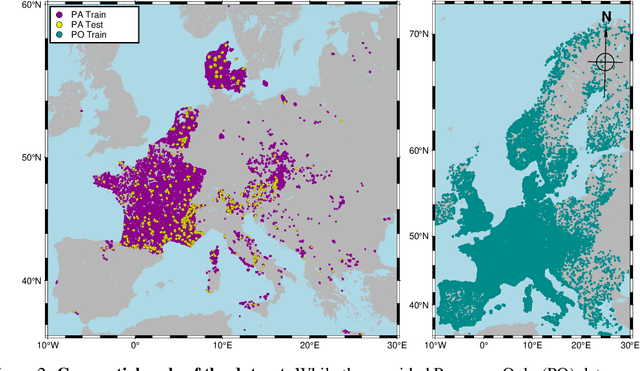

Abstract:The difficulty of monitoring biodiversity at fine scales and over large areas limits ecological knowledge and conservation efforts. To fill this gap, Species Distribution Models (SDMs) predict species across space from spatially explicit features. Yet, they face the challenge of integrating the rich but heterogeneous data made available over the past decade, notably millions of opportunistic species observations and standardized surveys, as well as multi-modal remote sensing data. In light of that, we have designed and developed a new European-scale dataset for SDMs at high spatial resolution (10-50 m), including more than 10k species (i.e., most of the European flora). The dataset comprises 5M heterogeneous Presence-Only records and 90k exhaustive Presence-Absence survey records, all accompanied by diverse environmental rasters (e.g., elevation, human footprint, and soil) that are traditionally used in SDMs. In addition, it provides Sentinel-2 RGB and NIR satellite images with 10 m resolution, a 20-year time-series of climatic variables, and satellite time-series from the Landsat program. In addition to the data, we provide an openly accessible SDM benchmark (hosted on Kaggle), which has already attracted an active community and a set of strong baselines for single predictor/modality and multimodal approaches. All resources, e.g., the dataset, pre-trained models, and baseline methods (in the form of notebooks), are available on Kaggle, allowing one to start with our dataset literally with two mouse clicks.
The GeoLifeCLEF 2020 Dataset
Apr 08, 2020
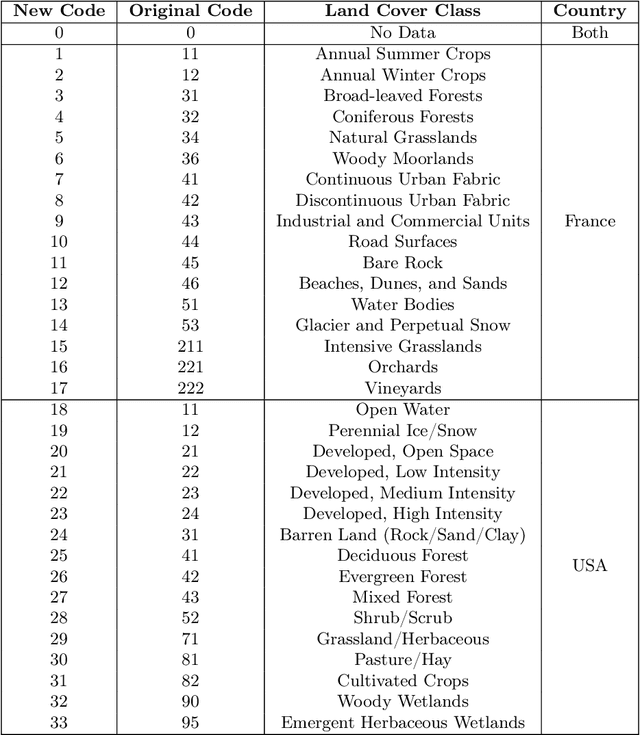
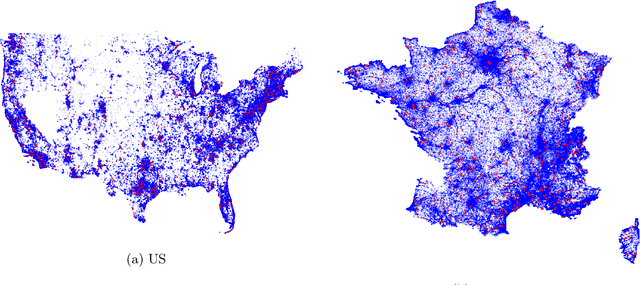
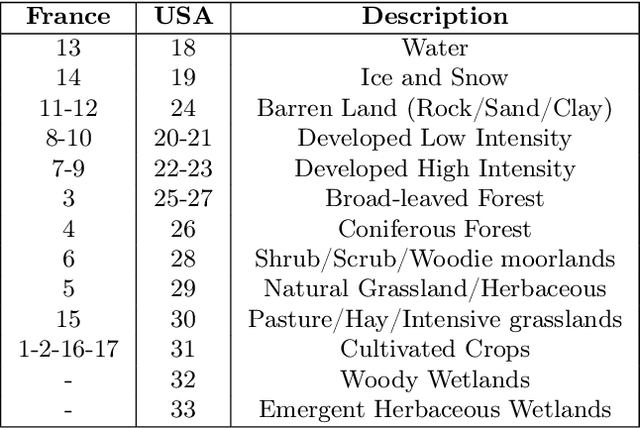
Abstract:Understanding the geographic distribution of species is a key concern in conservation. By pairing species occurrences with environmental features, researchers can model the relationship between an environment and the species which may be found there. To facilitate research in this area, we present the GeoLifeCLEF 2020 dataset, which consists of 1.9 million species observations paired with high-resolution remote sensing imagery, land cover data, and altitude, in addition to traditional low-resolution climate and soil variables. We also discuss the GeoLifeCLEF 2020 competition, which aims to use this dataset to advance the state-of-the-art in location-based species recommendation.
Evaluation of Deep Species Distribution Models using Environment and Co-occurrences
Sep 19, 2019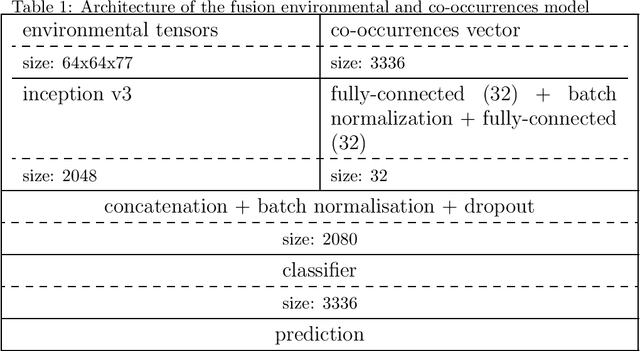

Abstract:This paper presents an evaluation of several approaches of plants species distribution modeling based on spatial, environmental and co-occurrences data using machine learning methods. In particular, we re-evaluate the environmental convolutional neural network model that obtained the best performance of the GeoLifeCLEF 2018 challenge but on a revised dataset that fixes some of the issues of the previous one. We also go deeper in the analysis of co-occurrences information by evaluating a new model that jointly takes environmental variables and co-occurrences as inputs of an end-to-end network. Results show that the environmental models are the best performing methods and that there is a significant amount of complementary information between co-occurrences and environment. Indeed, the model learned on both inputs allows a significant performance gain compared to the environmental model alone.
 Add to Chrome
Add to Chrome Add to Firefox
Add to Firefox Add to Edge
Add to Edge